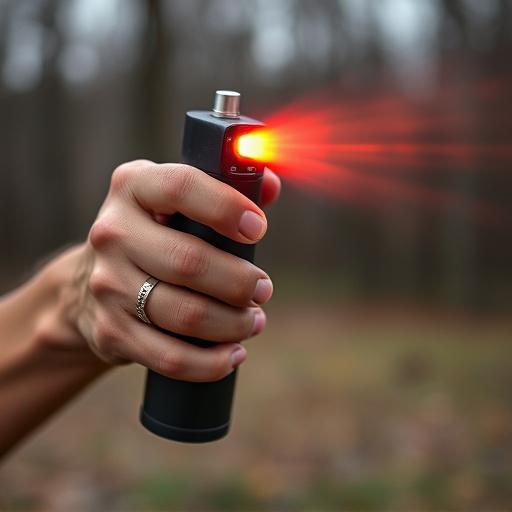Proper pepper spray storage and shelf life management are critical for law enforcement agencies to ensure officer safety and legal compliance. This involves storing pepper spray in cool, dry places, away from direct sunlight, with a recommended shelf life of 2-3 years. Effective tracking, regular inspections, and timely replacement are key practices to maintain the agent's potency beyond its expiration date.
In the realm of law enforcement, riot control agents like pepper spray are essential tools for managing civil unrest. Understanding these agents, their types, and optimal usage is paramount for maintaining public safety. This article delves into the intricacies of pepper spray, focusing on storage best practices and shelf life considerations crucial for law enforcement agencies to stay compliant and prepared. By exploring these aspects, we aim to equip officers with vital knowledge for effective crowd control.
- Understanding Riot Control Agents: Types and Their Role in Law Enforcement
- Pepper Spray Storage: Best Practices for Safety and Compliance
- Shelf Life of Pepper Spray: When to Replace and Key Considerations for Law Enforcement Agencies
Understanding Riot Control Agents: Types and Their Role in Law Enforcement
Riot control agents, also known as less-lethal weapons, are chemical substances designed to disrupt and disperse crowds during law enforcement operations. These agents play a pivotal role in managing civil unrest, allowing officers to maintain order while minimizing harm to both civilians and themselves. The most common types include pepper spray, tear gas, and rubber bullets, each with distinct properties and applications.
Pepper spray, for instance, is a popular choice due to its non-lethal nature and effectiveness in incapacitating individuals temporarily. It involves capsaicin, the active ingredient found in chili peppers, which irritates the eyes, nose, and respiratory system. Proper storage and handling are crucial for maintaining pepper spray’s potency and safety. Guidelines suggest storing it in cool, dry places away from direct sunlight, with a recommended shelf life of 2-3 years to ensure maximum effectiveness.
Pepper Spray Storage: Best Practices for Safety and Compliance
Proper pepper spray storage is paramount for law enforcement agencies to ensure both officer safety and compliance with legal regulations. The best practice is to store pepper spray in a cool, dry place away from direct sunlight or extreme temperatures. It should be kept out of reach of unauthorized personnel, children, and animals, secured behind locked cabinets or in designated safe areas. Each unit should be clearly labeled with its date of purchase and expiration date, as pepper spray has a limited shelf life. Typically, pepper spray remains effective for 2-5 years, depending on the manufacturer’s guidelines, after which it must be replaced to maintain potency.
To maximize shelf life, officers should store their pepper spray according to the manufacturer’s instructions, avoiding exposure to moisture and extreme heat or cold. It is also crucial to check regularly for any signs of damage, degradation, or leaks, discarding any compromised units immediately. By adhering to these best practices, law enforcement agencies can ensure that their pepper spray remains a reliable tool for riot control and public safety.
Shelf Life of Pepper Spray: When to Replace and Key Considerations for Law Enforcement Agencies
The shelf life of pepper spray is a critical consideration for law enforcement agencies to ensure their equipment remains effective and safe for use. While the specific duration can vary depending on factors like manufacturing quality, storage conditions, and environmental exposure, most pepper spray canisters typically have a shelf life of 2-5 years. After this period, the chemical agents inside may degrade or lose potency, rendering them less potent and potentially ineffective during critical situations.
Law enforcement agencies should establish rigorous pepper spray maintenance routines that include regular inspections, proper storage, and timely replacement. Storage should be in cool, dry places away from direct sunlight and extreme temperatures to prolong the canister’s life. Additionally, tracking usage and date of acquisition can help agencies anticipate replacement needs, ensuring they never find themselves without this vital riot control agent during operations.
Riot control agents, particularly pepper spray, are valuable tools for law enforcement in managing civil disturbances. Proper storage and understanding of shelf life are essential to ensure effectiveness and safety. By adhering to best practices for pepper spray storage and regularly replacing outdated stock, law enforcement agencies can maximize their readiness and minimize risks associated with ineffective or hazardous equipment. These measures contribute to the overall efficiency and public safety during high-pressure situations.
